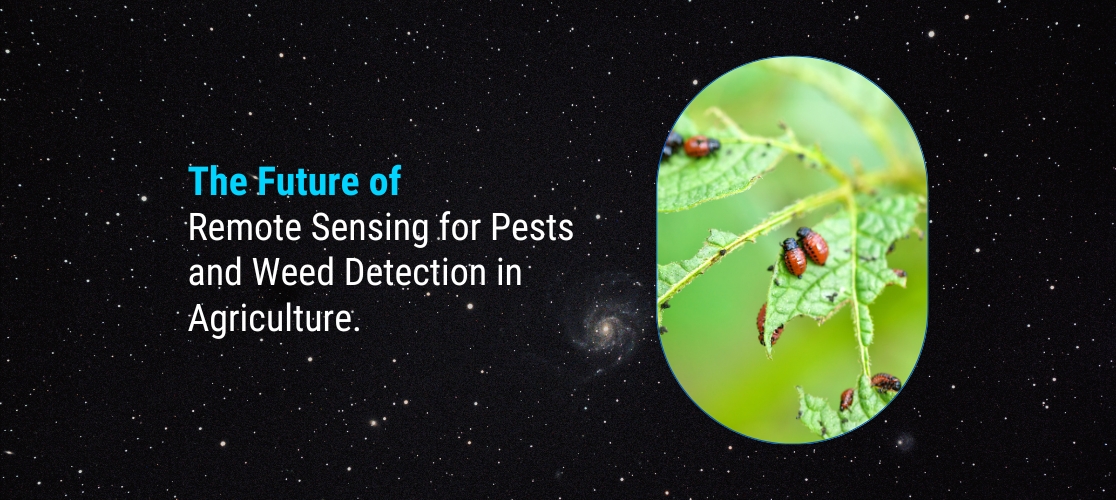16 May 2023
The Future of Remote Sensing for Pests and Weed Detection in Agriculture.

Remote sensing technology has revolutionised the way we manage crops and pests. Traditional pest management practices rely heavily on visual inspection, which is both time-consuming and often inaccurate. Remote sensing technology can provide a more efficient and accurate method of detecting pests and weeds in crops. In this blog, we will explore the future of remote sensing for pests and weed detection in agriculture, with the following pointers:
Hyperspectral imaging: Hyperspectral imaging is a remote sensing technique that can be used to detect pests and weeds by analysing their unique spectral signatures. Hyperspectral sensors can capture data across hundreds of narrow spectral bands, providing detailed information about the crop’s health and the presence of pests and weeds.
Machine learning algorithms: Machine learning algorithms can be used to analyse hyperspectral data and identify the presence of pests and weeds. By training these algorithms on large datasets, they can learn to recognise the spectral signatures of various pests and weeds, even in complex agricultural environments.
Unmanned aerial vehicles (UAVs): UAVs equipped with hyperspectral sensors can provide a more efficient and cost-effective method of crop monitoring. UAVs can fly over large agricultural fields, capturing high-resolution images and data that can be used to detect pests and weeds.
Integration with precision agriculture: Remote sensing technology can be integrated with precision agriculture techniques, such as variable-rate spraying and precision irrigation, to provide more targeted and efficient pest management. By identifying areas of the field that are most heavily affected by pests or weeds, farmers can apply treatments only where they are needed, reducing waste and minimising the impact on the environment.
Real-time monitoring: Remote sensing technology can provide real-time monitoring of crops, allowing farmers to detect pest and weed infestations early and take action before they become a significant problem. This can help to prevent yield losses and reduce the need for costly and environmentally damaging treatments.
In conclusion, remote sensing technology has the potential to revolutionise the way we detect and manage pests and weeds in agriculture. With hyperspectral imaging, machine learning algorithms, UAVs, and integration with precision agriculture, farmers can monitor their crops more efficiently and accurately, reducing waste and minimising the impact on the environment. Real-time monitoring can also help to prevent yield losses and ensure a more sustainable and productive agriculture industry.
Join our community and never miss an update! Subscribe to our newsletter and blog to stay up-to-date on the latest trends, tips, and insights in your area of interest. Don’t miss out on exclusive content and promotions. Sign up now and be a part of our growing community!
